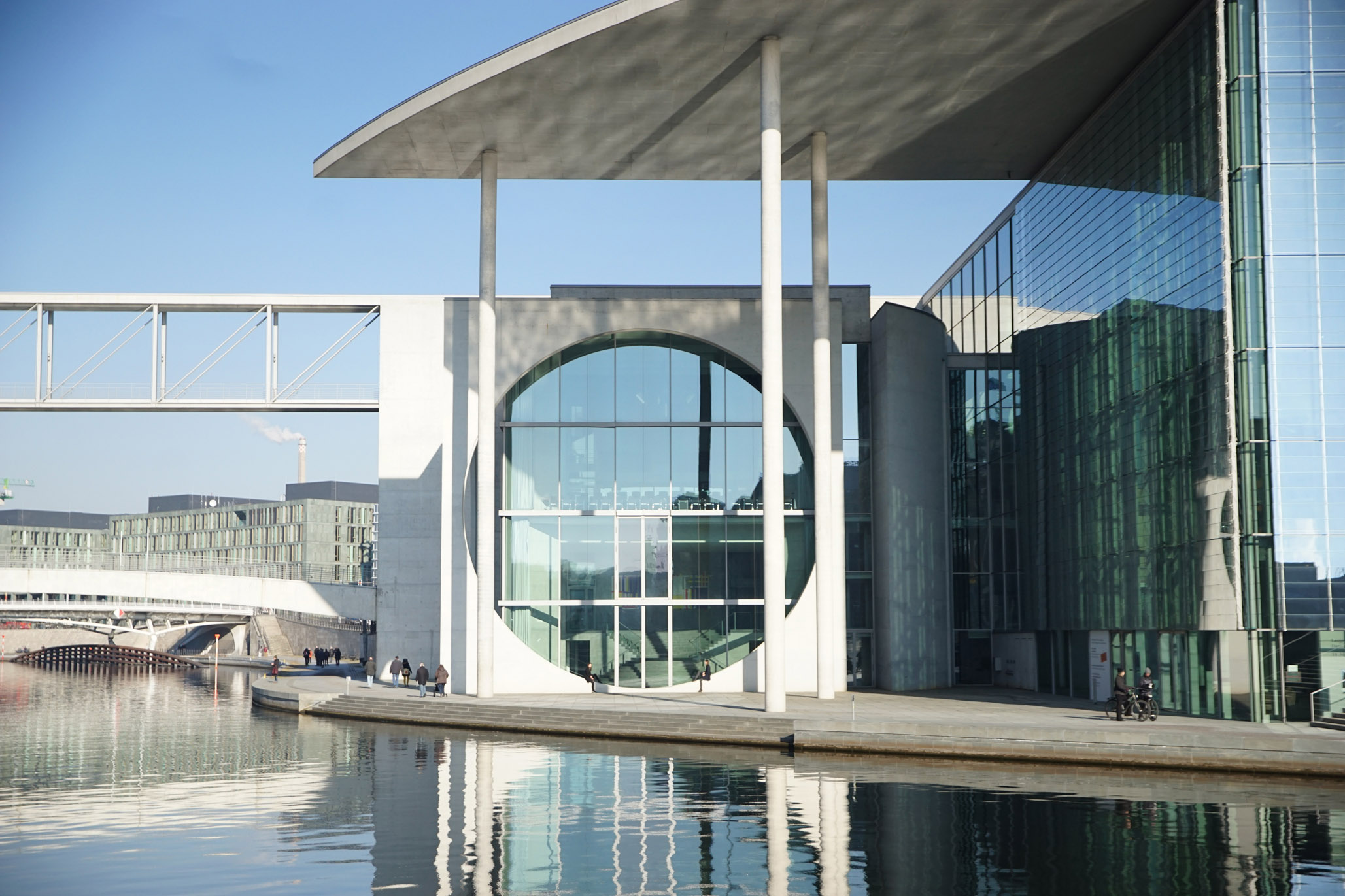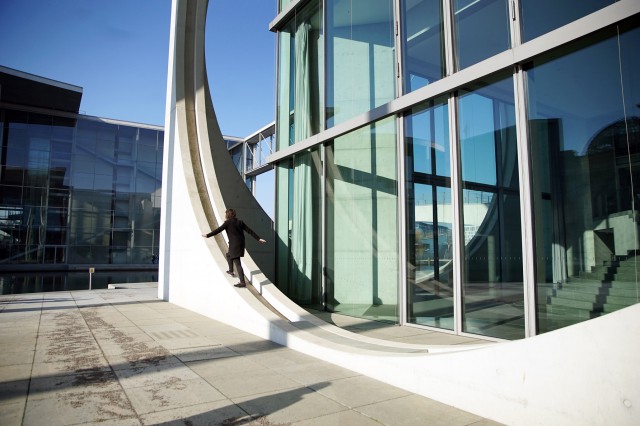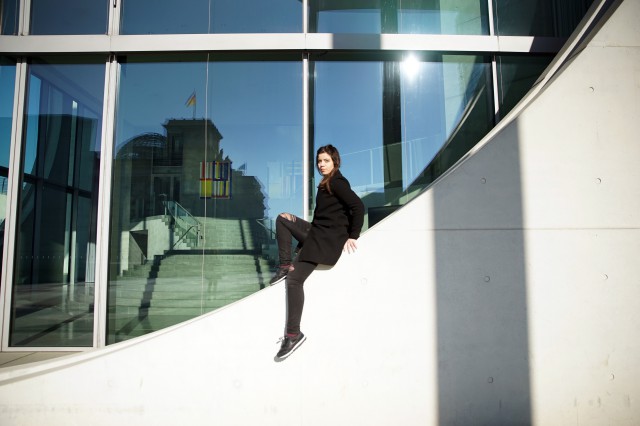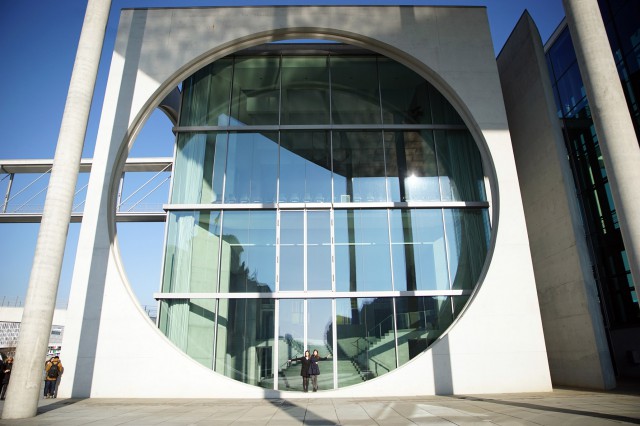Located on the bend of the River Spree, right in the middle of the heart of Berlin lies the Regierungsviertel, or Government District. Welcoming not only the Reichstag, the building complex consists of three parts: the Bundestag office, the Marie Elisabeth Lüders House and the Paul Löbe House, with the Federal Chancellery as the most striking building of the “Band des Bundes“(literally, the Band of the Federation), a metallic ribbon which was specifically conceptualize to cover and unify the former east and west sides of the city, in a true symbolic gesture that stands for democracy.
As part of the complex of official governmental buildings, the open spaces around the Reichstag are much more than a simple set of buildings; the areas attract not local but also foreigners through its clean architecture, art and green spaces where people can hang out, take a walk along the Spree or just relax from a long day’s work. Ideal to get away from the hustle and bustle of the metropolis, paying a visit to the Regierungsviertel is indeed a great idea for recharging batteries and perhaps to throw a snowball or two to your walking companion.
Truly imposing, as we start to approach the Government District feelings of smallness soon start to unsettle; its impressive characteristics such as huge windows and endless stare cases and halls are on display and were specifically created to depict clarity and transparency. Conveying a contemporary and differentiated look to the venue, its minimalist and neoclassicist style took inspiration from the Bauhaus movement – with all the buildings of the Regierungsviertel looking for a unitary architecture where everything has symbolism. Also, its design is functionally divided into wings and facades that are directed toward the west and east former parts of the city, from where one can have a wonderful view of Berlin. Nonetheless, the “Band des Bundes” complex was frankly inspired in the architecture of Le Corbusier, which can be seen through the organization and purism of forms, points of light and simplistic architecture model, according to the laws of functionality. Indeed, “Corbu” notions of surface clarity and precision in the arrangement of volumes, are also already perceived in the whiteness of the buildings walls.
However, it is not only the clean spaces enthusiasts that this small district attracts – although it is a contrast to Berlin’s bohemia, the Regierungsviertel has become the checkpoint for explorers that can also be enriched in culture since next to this district numerous embassies and museums are located which appeals to an international environment as only Berlin can provide. And if you want to escape from a more industrial environment there is always the Spree which assumes a particularly beautiful hue during the Winter and is the ideal place for a selfie and for the inhabitants who want to ignore Berlin’s craziness – at least for a little while.
photos: Alicia Kassebohm
Text: Matilde Velho Cabral
* * *
 Matilde Velho Cabral is a Portuguese girl in love with the colorful corners of cities and the melancholic beauty of words. She published a poetry book, studied Law and recently moved to Berlin to do a MA in Convergent Journalism. She loves to communicate and wants to discover the intertwined patterns of those who inhabit Berlin. Often she likes to hear whale sounds and her favorite book is “Lolita”.
Matilde Velho Cabral is a Portuguese girl in love with the colorful corners of cities and the melancholic beauty of words. She published a poetry book, studied Law and recently moved to Berlin to do a MA in Convergent Journalism. She loves to communicate and wants to discover the intertwined patterns of those who inhabit Berlin. Often she likes to hear whale sounds and her favorite book is “Lolita”.




